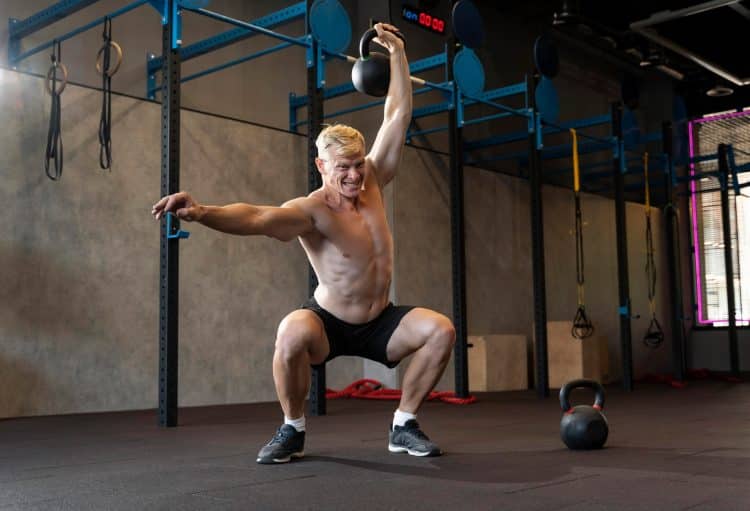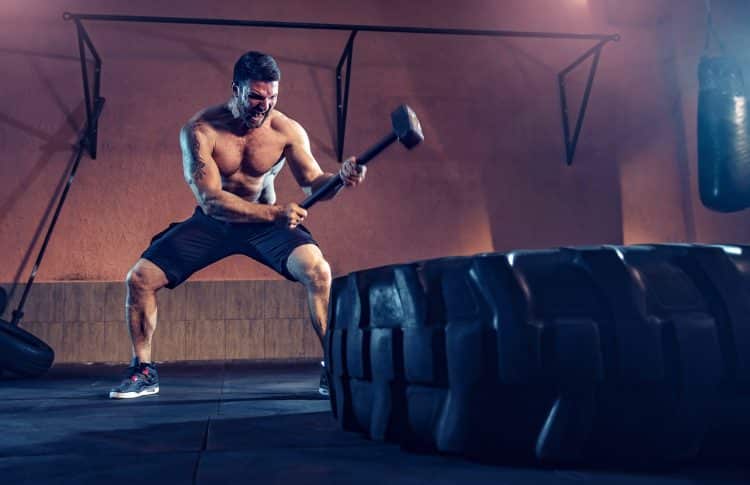The Spartans are legendary, and for good reason. Hailing from ancient Greece and famous for their red cloaks and bronze armaments, the Spartans were masters of war and seldom defeated, even when vastly outnumbered.
From the tender age of 7, Spartan boys were enrolled into a military school called the “agoge” for a rigorous training program that lasted until they were 20. Taken from their families, they lived in communal barracks, facing numerous physical and mental challenges designed to mold their minds and forge their bodies into unbreakable weapons.
Physical training was relentless. Strength exercises, endurance runs, tactical drills – all were essential components of their regimen. But it wasn’t just about individual prowess. The Spartans placed immense value on teamwork and strategy. As the saying goes, a single stick can be broken easily, but a bundle? That’s a different story.
The Spartans were more than just formidable warriors; they stood as timeless symbols of strength, discipline, and unwavering determination. To train like a Spartan is no small feat, but then again, the Spartans themselves were nothing short of extraordinary.
In this article, we discuss what it takes to be a Spartan warrior and provide you with a Spartan-inspired workout plan to try. If you think you’re tough enough, that is!
The Spartan Mindset

“The mind is the limit. As long as the mind can envision the fact that you can do something, you can do it, as long as you really believe 100 percent.” – Arnold Schwarzenegger.
Level Up Your Fitness: Join our 💪 strong community in Fitness Volt Newsletter. Get daily inspiration, expert-backed workouts, nutrition tips, the latest in strength sports, and the support you need to reach your goals. Subscribe for free!
If you want to train like a Spartan, you must learn to think like a Spartan. Your mindset and spirit are the key to reaching your warrior fitness potential. Real-life Spartan training was unrelenting, and there was no opportunity to quit. With your shield or on it, as the old Spartan saying goes.
Mental fortitude is as crucial as physical strength in Spartan training. So, before diving into our program, it’s essential to grasp the unbendable spirit that fueled every Spartan warrior. Only then can you truly understand and embrace Spartan training!
Unyielding Discipline
There was an unbreakable chain of command in the Spartan army. From their rigorous upbringing in the agoge, Spartans were conditioned to follow orders without question, and disobedience was not tolerated. Despite their military might, battles invariably resulted in heavy casualties. Spartan warriors never knew if their next skirmish would be their last. Facing battle against unfavorable odds, especially when the outcome was uncertain, demanded incredible discipline and mental fortitude. They followed orders or died trying. That was the Spartan way.
While you’ll probably never need to use your discipline to overcome abject fear, adopting a similar mindset—forged from the same principles that guided the Spartans—will ensure you stick to your workout schedule and complete the prescribed workout. Failure is not an option, and nor is quitting.
Mental Toughness
The Spartans were trained almost from birth to be determined and tough. While they felt pain, cold, tiredness, and hunger, they were conditioned to push through discomfort and keep moving forward.
Modern-day special forces adopt a similar mindset, and the Navy SEALs have a famous saying, “The only easy day was yesterday.”
There will be times on your own training when the going gets tough, and you’ll want to quit. You’ll be hot, sweaty, and tired, and your muscles will burn as your heart pounds and lungs heave. Why train and suffer when you can Netflix and chill?
However, if you want to reach your goals, you cannot give up!
Remember, thousands of ancient and modern warriors have pushed themselves past their perceived limits. Their spirit is a testament to human endurance, and if they could rise to the challenge, so can you
Honesty and Integrity
While Spartan children were encouraged to steal food to make up their meager rations, they were honest and forthright in all other things. They despised deception and believed in acting and speaking honestly, even if doing so caused offense.
Adopting the same mindset in your training is also beneficial. For example, when acknowledging your strengths and weaknesses, setting realistic goals, and not deluding yourself about progress. It’s about recognizing when you’re pushing your limits and when you’re slacking off.
Integrity means staying committed to your fitness goals, even when faced with temptations or distractions. Someone with integrity remains dedicated to their fitness regimen, even when it gets tough or no one is watching. It’s about consistently doing the right thing for your body and health, not just when it’s convenient or easy.
Determination and Perseverance
Sparta wasn’t built in a day. And just as building a legendary city-state took many years, it’ll take time and consistent effort to transform your body and develop warrior-level fitness and strength. If you’re searching for a quick fix or a six-pack-in-30-days program, this isn’t it.
Spartans trained for 13 years before they took their place in the army, and training didn’t end when they graduated from the agoge; it was a lifelong commitment. So, like the warriors you’re planning on emulating, you need to knuckle down and be prepared for the long haul.
Determination and perseverance are keys to your long-term progress, so always keep your end goals in mind. However, remember also that every workout you successfully complete takes you one step closer to your destination. Celebrate every win.
Adaptability and Flexibility
No battle plan survives first contact with the enemy. While we’ve provided you with a training program to follow, there will be times when you simply cannot stick to it. Maybe you’re going on vacation, working late, or don’t have access to the necessary equipment.
While you could skip a few workouts, that’s not the Spartan warrior way. Instead, they’d find an alternative path to the same goal. Improvise, adapt, and overcome. You need to adopt the same adaptable, flexible mindset if you want to be successful.
For example, train before work if you know you’ll be too busy after, go hiking with a heavy backpack if you cannot go for a run, or run stairs if you cannot do hill sprints. And remember, the only bad workout is the one you didn’t do.
Improvise as needed to stay on track. However, always listen to your body. If you’re ill or injured, it’s not only okay but essential to rest and recover. Spartans knew that power of the tactical withdrawal. Gather your resources and attack again.
The Physical Regimen
While the Spartans are often depicted in movies as pretty-boy CrossFit/bodybuilder hybrids, their all-encompassing fitness regime meant that, in reality, they were the ultimate functional athletes.
They didn’t train for aesthetics, and the size of their arms or the definition of their abs was a non-issue. Instead, they trained for the demands of combat, which, in ancient Greece, meant fighting with swords, spears, and shields, often after marching for many days to reach the battle site. Conflicts could last many days, with rest only allowed when the sun went down.
Spartans were also prodigious runners and often attended the ancient Olympic games. However, they were usually banned from boxing and wrestling events, as they tended to kill their opponents. As far as Spartans were concerned, there was no point fighting for fun.
Spartan fitness training involved several separate but overlapping disciplines:
Strength Training
Strength is the foundation on which all other fitness components are built. Being strong means you can rise to almost any physical challenge, including handling heavy weapons and overpowering an enemy in hand-to-hand combat. Strong bodies are also more robust and injury-resistant.
However, the Spartans weren’t muscle-bound or bulky, as excess muscle mass uses a lot of energy, demanding more food, and is hard to carry around. Instead, the Spartans were the epitome of “lean and mean.” They were typically built more like middle-weight MMA fighters than bodybuilders or powerlifters.
Strength training was a crucial part of life in the Spartan agoge, but they didn’t have weights as we know them. Instead, they did bodyweight exercises or calisthenics, which is actually a word with Greek origins, and lifted and carried rocks, logs, and each other to develop strength without excess mass.
Needless to say, Spartan strength training was immensely intense and functional and designed to improve their performance in battle, not get them ready for beach season.
Endurance and Stamina
While Spartans needed strength, they could not afford to get tired, so endurance and stamina were also highly prized. Spartans were prolific runners and could cover long distances at astonishing speeds. They could also march many miles and then immediately engage their enemies. For example, the Spartans marched over 130 miles/210 kilometers from Sparta to Thermopylae to face an overwhelming force of Persians, as famously depicted in the story of the 300.
The Spartans always ran barefoot and marched wearing very basic sandals, so it’s no exaggeration to suggest their feet were as tough as weathered leather.
The need for endurance and stamina meant that Spartan training featured daily cross-country runs and frequent long-distance marches. They also did sprints and workouts that resemble modern-day circuit training. Armed and unarmed combat training also tested and developed their endurance and stamina.
Gymnastics and Dance
Strength and fitness were critical to the Spartan way of life. Still, these ancient Greek warriors also valued agility, grace, coordination, rhythm, and poise. These “softer” fitness components created more skilled fighters. Without things like balance and coordination, even the most powerful fighter can be brought down by a weaker, smaller opponent.
Spartans wouldn’t have wasted time using stability balls and BOSU to develop their agility and balance. Instead, they practiced gymnastics and, most surprisingly, dance.
Teamwork
Spartans were trained and assessed individually but also needed to operate as part of the army, so teamwork was also critical. After completing their training, young Spartans were expected to slot seamlessly into their units, which were usually manned by veterans of many conflicts.
Their signature formation, the phalanx, required immense discipline and coordination, and each warrior was responsible for protecting the man by his side. This mutual support meant that, together, the Spartans were almost unbeatable.
So, while training alone can be rewarding, exercisers often do better when they’re part of a fitness community. Consider working with a training partner if you feel you’ll benefit from some additional support and accountability.
Spartan-Inspired Workout Plan
Strength and conditioning were full-time occupations for the Spartans. Whether they were still in the agoge or had graduated to their fighting units, Spartans spent much of their day engaged in physical training.
Needless to say, such a full-on workout schedule is impractical for most people. Even professional athletes have to balance training with their home and family life, which were not priorities in ancient Sparta.
So, here is a workout plan inspired by the demands and ethos of Sparta. It’s designed to improve your functional strength and fitness and prepare your body for whatever challenges you are likely to face.
We’ve embraced a minimalistic approach to training for this program, so you won’t need any fancy equipment to follow the plan. In fact, armed with little more than a pull-up bar, dip bars, and a few other readily available tools, you won’t even need to go to the gym.
Weekly Schedule
Here’s an overview of your Spartan Warrior Workout week. It’s a seven-day plan, and, like the Spartans, you won’t be getting any days off. However, day seven, Sunday, is an easy day where you can choose what activity you do. As such, you can make this an active recovery day if you wish.
| Monday | Tuesday | Wednesday | Thursday | Friday | Saturday | Sunday |
| Strength training | Endurance training | Mixed training | Strength training | Endurance training | Mixed training | Free choice day |
Warm-Up and Cool-Down
Every good workout begins with a thorough warm-up. Warming prepares your body and mind for what you’re about to do, enhancing your performance and reducing your risk of injury. So, never skip your warm-up!
To get your body ready for training, begin with some light cardio, e.g., jogging or jumping rope, and then do some dynamic mobility and flexibility exercises for your major joints and muscles. Finish your warm-up by practicing a few of the movements you’re about to do to ensure you know how to do them correctly.
At the end of each workout, spend 10-15 minutes stretching all the muscles you’ve just been training. This will help ward off post-exercise muscle soreness, may speed up recovery, and will help improve your flexibility. Hold each stretch for at least 30 seconds, starting at your calves and working up.
Monday: Strength Training
Spartans didn’t spend much time lifting weights, so nor will you. Instead, the focus of today’s workout is calisthenics. You’ll be training your entire body using compound bodyweight exercises.
Push each set to within a couple of reps of failure, striving to increase your rep count as the weeks pass. This is shown as AMRAP (as many reps as possible) on the chart below.
| # | Exercise | Sets | Reps | Recovery |
| 1a | Pull-ups | 2-4 | AMRAP | 90 seconds |
| 1b | Bulgarian split squat | |||
| 2a | Parallel bar dips | 2-4 | AMRAP | 90 seconds |
| 2b | Nordic curls | |||
| 3a | Push-ups | 2-4 | AMRAP | 90 seconds |
| 3b | Inverted rows | |||
| 4a | Ab wheel rollout | 2-4 | AMRAP | 90 seconds |
| 4b | Side plank/leg lift |
The exercises are arranged in pairs called supersets. Do the first exercise, designated 1a, and then the second exercise, assigned 1b. Rest for 90 seconds and repeat the pairing 1-3 more times before moving on to the next superset (2a/2b).
Tuesday: Endurance Training
Your workout today is all about building low-end cardiovascular fitness and mental stamina. Spartans did this by running long distances, and you will, too. After your warm-up, head out and run at a comfortable pace for 40-60 minutes.
Level Up Your Fitness: Join our 💪 strong community in Fitness Volt Newsletter. Get daily inspiration, expert-backed workouts, nutrition tips, the latest in strength sports, and the support you need to reach your goals. Subscribe for free!
If running for so long is beyond you right now, you can alternate between running and walking. Simply run until you feel you have to walk and then walk until you feel ready to run. As you get fitter, you’ll naturally be able to run more and walk less.
Ideally, your heart rate should be around 60-70% of your maximum. You should still be able to talk at this pace, albeit with pauses for breaths. It’s always okay to slow down if it means you can keep going.
Ideally, this will be a cross-country/off-road run, not on roads or a treadmill. However, do what you must and embrace Spartan adaptability and flexibility.
If you are unable to run, you can cycle, swim, or ruck. Increase the duration as you get fitter and more accustomed to your workout, building up to 90 minutes.
Wednesday: Mixed Training
Spartans had to be fit for anything, which is the premise of today’s workout. It combines many different exercises to challenge and develop multiple fitness characteristics. This workout should feel a little chaotic and not balanced or highly structured like most training plans.
Storm through the following list of activities as fast as you can. The reps are kept purposely low to ensure you can complete each exercise and quickly move on to the next. Complete the entire list, rest for three minutes, and then repeat the sequence twice more. Feel free to change any exercises you cannot do, replacing them with something similar but more accessible or convenient.
| # | Exercise | Reps |
| 1 | Squat jumps | 10 |
| 2 | Push-ups | 10 |
| 3 | Wall squat | 30 seconds |
| 4 | Sit-ups | 20 |
| 5 | Jump rope | 100 |
| 6 | Handstand against a wall | 30 seconds |
| 7 | Medicine ball slams | 10 |
| 8 | Plyo push-ups | 10 |
| 9 | Leg raises | 20 |
| 10 | Medicine ball thrusters | 10 |
| 11 | Diamond push-ups | 10 |
| 12 | Jumping jacks | 50 |
| 13 | Mountain climbers | 10 per leg |
| 14 | Crunches | 20 |
| 15 | Burpees | 10 |
If you cannot complete the specified number of reps, break the set into smaller chunks, only moving on to the next exercise when you have completed them all.
Thursday: Strength Training
Today’s strength training session follows the same format as Monday’s, but the exercises are different. Switching exercises from one workout to the next will help alleviate boredom and prevent overuse injuries. However, the muscles trained are the same. As before, push each set to within a couple of reps of failure, shown as AMRAP (as many reps as possible) on the chart below.
| # | Exercise | Sets | Reps | Recovery |
| 1a | Chin-ups | 2-4 | AMRAP | 90 seconds |
| 1b | Sissy squats | |||
| 2a | Straight bar dips | 2-4 | AMRAP | 90 seconds |
| 2b | Single-leg hip thrust | |||
| 3a | Decline push-ups | 2-4 | AMRAP | 90 seconds |
| 3b | Ring/TRX rows | |||
| 4a | Oblique crunches | 2-4 | AMRAP | 90 seconds |
| 4b | Hanging knee raise |
Friday: Endurance Training
Today’s workout will build speed and endurance. Simply head out and run for 10-15 minutes until you find a hill. It should be moderately steep and quite long – ideally about 100-150 meters. After stretching briefly, set a timer for 20 minutes and then sprint up and walk down your hill as many times as possible until the time is up. Jog back home, and you’re done!
Saturday: Mixed Training
Today’s workout places your fitness in the hands of the gods. And, like a Spartan warrior, you’ll just need to deal with whatever comes your way. You’ll need a six-sided die and a deck of cards…
Write six upper body, six lower body, six core, and six cardio exercises on a piece of paper. For example:
- Upper body: Push-ups, pull-ups, dips, etc.
- Lower body: Lunges, squats, step-ups, etc.
- Core: Sit-ups, crunches, bicycle crunches, etc.
- Cardio: Jump jacks, burpees, jump rope, etc.
Throw your dice to pick one exercise from each group. Take what you are given; no swaps! You should now have four randomly selected exercises.
Next, allocate a suit of cards to each of your four exercises, e.g., clubs equal push-ups, hearts equal lunges, spades equal crunches, and diamonds equal burpees.
Shuffle your deck of cards and place them face down. Turn up the top card and do the exercise the suit represents for the indicated number of reps. So, if you turn up the seven of hearts, using the above example, you’d do seven lunges – per leg, of course.
Do your reps, turn over the next card, and repeat. Continue on through the deck until you have completed all the cards. Aces are worth one, all numbered cards are worth their face value, and all picture cards are worth 12. Jokers are to be ignored.
Depending on how the cards are shuffled, you’ll probably turn up runs of the same suit or several high-value cards in a row. Tough luck! Keep plugging away until you have completed the specified number of reps, and then move on.
Use this same process whenever you repeat this workout, so the exercises are always different.
Sunday: Free Choice Day
While today is not a rest day, you are free to do anything you want so long as it gets you up and moving, ideally outside. Good options include:
- Go for a hike or bike ride.
- Try wild swimming.
- Do yoga.
- Go surfing, kayaking, or paddleboarding.
- Play a sport.
- Do some gardening.
- Chop wood or shovel snow.
Whatever you do should get you sweating lightly and breathing faster, but it should not be tiring or overly challenging. Think recreational physical activity rather than structured workout.
The Spartan Diet
So, what did the real-life Spartans eat? Unsurprisingly, the Spartan diet was basic, functional, and designed to fuel intense training rather than please palates. Staples of the Spartan diet included:
- Barley
- Figs
- Cheese
- Fresh fruits
- Vegetables
- Olive oil
- Wine (usually watered down and only in moderation)
- Meat (occasionally, primarily from hunting).
Despite living such active lives, the Spartans rarely overate and practiced mindful eating combined with periodic fasting. They valued hunger, believing it made them tougher and less reliant on food during battle. They seldom feasted, rarely drank alcohol to excess, and food was generally thought of as a necessity and not a luxury.
The Spartans also consumed a dish known as “black broth,” which was a concoction of pork, blood, salt, and vinegar. Black broth was a Spartan diet staple and infamous throughout ancient Greece.
The perceived benefits of black broth included:
- Nutritional Value: The broth was believed to be highly nutritious, providing the essential nutrients required by a warrior.
- Sustenance: It was a hearty meal that could sustain a Spartan warrior for a long time, especially during campaigns or rigorous training.
- Health: Some believed that the ingredients in the broth had specific health benefits, contributing to the overall strength and vitality of the Spartans.
- Hydration: Black broth was a rich source of minerals and hydrating fluids. Greece is a hot place, and Spartans would have lost a lot of fluids and electrolytes through sweating. Black broth was the original Gatorade!
- Simplicity: Consistent with the Spartan mindset, black broth was a simple meal without any luxurious ingredients.
- Toughness: Consuming such a basic and unpalatable dish was seen as a testament to Spartan toughness and disdain for luxury.
- Unity: Sharing the same meal fostered a sense of unity and equality among the warriors, regardless of their age, status, or rank.
Not surprisingly, many other Greeks found the idea of the broth repulsive. A famous anecdote tells how a non-Spartan, having tried the black broth for himself, remarked that he now understood why Spartans were willing to die in battle – to avoid having to eat their infamous broth!
While the Spartans undoubtedly got a lot right about nutrition, the good news is that modern exercisers have easy access to a wide range of nutritious and delicious foods. While you are free to create your own black broth, we don’t recommend it.
However, adopting a more Spartan mindset about the food you eat could be helpful, especially if you are struggling with your weight. Intermittent fasting and cutting out sweets and treats are great ideas, and being mindful of hunger and satiety could help prevent overeating.
The Mediterranean diet contains many of the foods consumed in ancient Sparta. As one of the healthiest diets in the world, it could be an excellent choice for modern-day Spartans.
Spartan Workout FAQs
Do you have a question about our Spartan workout plan? No problem, because we’ve got the answers!
1. Is this really how Spartans trained?
Training like a true Spartan is unrealistic in the modern world. Spartan training was incredibly tough, often cruel, a full-time occupation, and started when children reached the age of seven. Even the most intense modern-day military training schools are not this harsh.
That said, the types of training included in our plan are representative of some of the things that Spartans would have been required to do, albeit with a modern twist.
It would be impossible to accurately replicate authentic Spartan training, and given its brutal nature, that’s probably no bad thing!
2. Will this workout plan help prepare me for the military?
While modern military life is not typically as strenuous as in ancient Sparta, there are similarities. Today’s soldiers still need strength, endurance, agility, and an unstoppable mindset. Bootcamp, like the Spartan agoge, is a fully immersive experience designed to turn soft civilians into hardened soldiers.
Related: Army PRT Exercises – The Army Physical Readiness Training Drill
So, if you are thinking about joining the military and want to get in shape for bootcamp, this workout plan will undoubtedly help.
3. Is this program suitable for women, or is it only meant for men?
Women were not eligible for military service. That honor was reserved for males. That said, fitness training was part of life for Spartan women, and it was believed that strong women produced strong children. Women were encouraged to exercise and participate in sports, especially running and athletic events like throwing the javelin.
Thankfully, we don’t live in ancient Sparta, and our program is suitable for men and women. In fact, people of all genders should find this program challenging, effective, empowering, and fun.
4. Is this program suitable for beginners?
While Spartan training was undeniably tough, it was also progressive. It began when children reached the age of seven and entered the agoge. Then, over the next 13 years, they learned the skills of warfare and developed their incredible mindset, fitness, and strength.
Our program is not as progressive and starts at quite a high level of intensity and volume. As such, it’s probably not ideal for beginners, and we recommend you build a basic level of fitness and strength before attempting this workout plan.
Related: Beginner’s Calisthenics Plan
That said, you can certainly borrow elements from this plan to create your own beginner-friendly Spartan workout program. For example, you could shorten the workouts or reduce the number of training days.
5. Will this program help me lose weight?
Weight loss is largely dependent on your diet. To lose weight or, more accurately, burn fat, you need to create a calorie deficit, meaning you consume fewer calories than you burn. This will force your body to use stored body fat for energy.
The workouts in this plan will burn plenty of calories, but if you continue to overeat, you may not lose any weight and could even gain fat. But, if you adapt your diet and reduce your calorie intake, you should lose weight.
6. How can I tell if I’m overtrained?
Overtraining occurs when your workout routine exceeds your ability to recover. The symptoms of overtraining include:
- Increased resting heart rate
- Decreased grip strength
- Lack of energy
- Reduced motivation for exercise
- Poor workout performance
- Disrupted sleep
- General aches and pains
- Frequent minor injuries
- Frequent illnesses
- Mood swings
- Changes in appetite
You can lower your risk of overtraining by increasing exercise volume and intensity gradually, following a nutritious diet, getting plenty of sleep, and including easy and rest days in your training program.
You can read more about overtraining here.
7. Are there any supplements I can use during this program?
While you don’t need supplements to develop Spartan-like fitness and strength, even the Spartans had their infamous black broth to fuel their workouts and enhance recovery. Supplements that could help you on your modern-day Spartan quest include:
- Creatine
- Protein powder
- Pre-workout
- Branch-chain and essential amino acids
- Electrolyte/sports drinks
However, you should be able to get all the nutrients you need from a healthy, balanced diet, and supplements should be viewed as precisely that – supplementary to regular healthy food.
Closing Thoughts
The Spartans had an incomparable reputation for strength, discipline, and toughness. They lived for war and trained full-time to perfect their military prowess.
It was often said that Sparta had no walls because its soldiers were the only walls they needed. However, even the mighty Spartans eventually “modernized” and built fortifications to keep their enemies out.
It would be impractical, if not impossible, to replicate the Spartan agoge in modern times, and even elite special forces soldiers would struggle to survive in such a harsh environment. Spartan started at the age of 7 and lasted 13 years, and every day was a struggle for survival.
That said, adopting the mindset and some of the training methods of the Spartans could help you achieve an incredible transformation, turning you from soft and weak to sculpted and strong.
Needless to say, such a transformation won’t be easy, but with a Spartan mindset, nothing is impossible.
“We are what we repeatedly do. Excellence, then, is not an act, but a habit.” – Aristotle, ancient Greek philosopher.













